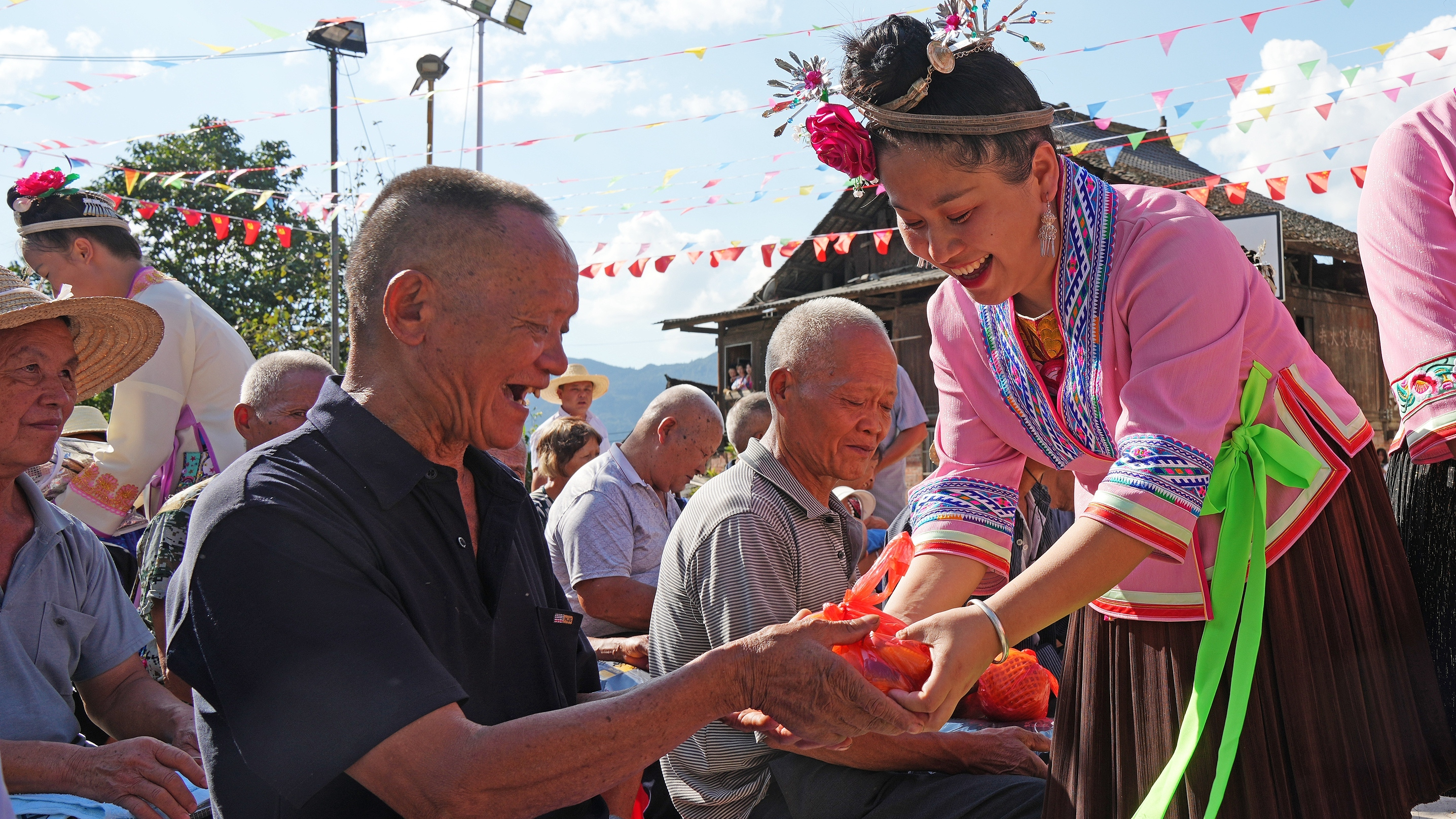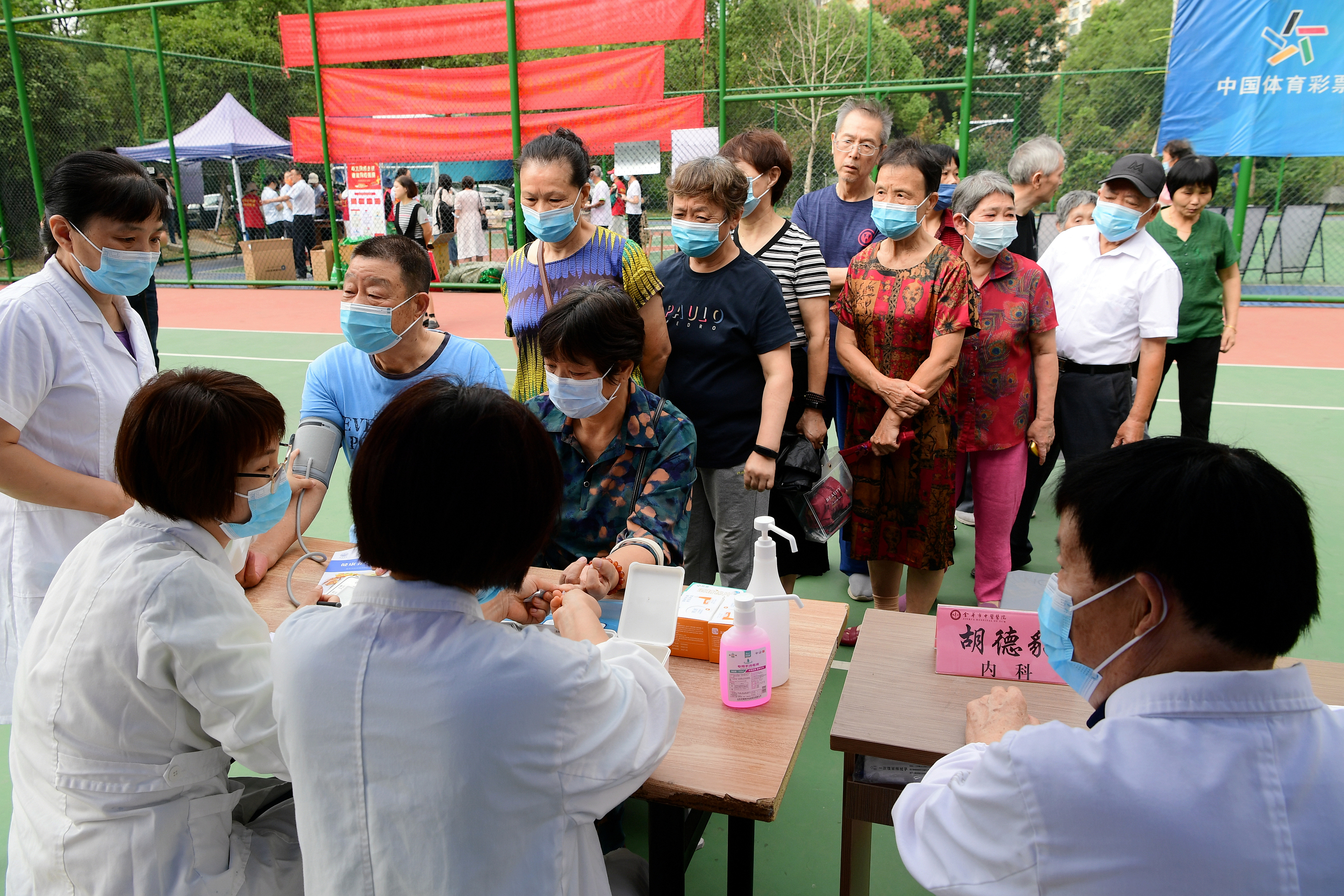
Young people hand out gifts for the elderly at Longcen Village, Rongshui Miao Autonomous County in Liuzhou, Guangxi Zhuang Autonomous Region, China, to welcome the Double Ninth Festival, October 3, 2022. /CFP
Young people hand out gifts for the elderly at Longcen Village, Rongshui Miao Autonomous County in Liuzhou, Guangxi Zhuang Autonomous Region, China, to welcome the Double Ninth Festival, October 3, 2022. /CFP
This year's Double Ninth Festival falls on Tuesday, the ninth day of the ninth lunar month. The celebration, also called Chongyang, is a traditional Chinese holiday when people express their love and respect for the elderly through various activities.
Caring for the elderly has been deeply rooted in Chinese culture since ancient times. Inherited by generations of Chinese people, the value has also been minted into government policies which guide the country in dealing with its rapidly aging population.
By the end of 2021, the country had over 267 million people aged 60 and above, accounting for 18.9 percent of the country's population, said Wang Haidong, director of the Department of Aging and Health, National Health Commission, at a press conference in September. The number of people over 65 reached 200 million, at a lower rate of 14.2 percent.
China's growing geriatric population is calling for a stronger elderly care industry. In the past decade, the government allocated a total of 35.9 billion yuan (about $5 billion) to increase the number of nursing homes. So far, elderly care services can be accessed in all urban communities and more than half of the rural communities.
The quality and variety of elderly care services have also been optimized. The Ministry of Civil Affairs, together with relevant departments, launched a 4-year special campaign to monitor the service quality of nursing homes nationwide.
A vast majority of the elderly in China take care of themselves at home or rely on community support, so local governments are encouraged to provide services based on the real needs of the elderly, including setting up community canteens and making subsidized elderly friendly adaptations at their homes and communities.
From 2019 to 2021, over 51,000 elevators were installed in the renovation of old residential areas across the country, according to data from the Ministry of Housing and Urban-Rural Development.

Older residents receive free medical treatment or health check-up at a community in Jinhua Development Zone, Zhejiang Province, China, September 28, 2022. /CFP
Older residents receive free medical treatment or health check-up at a community in Jinhua Development Zone, Zhejiang Province, China, September 28, 2022. /CFP
Provinces and regions with a higher degree of aging, such as Beijing, Shanghai, Sichuan, Chongqing and northeast China, are among the pioneers to promote senior-friendly improvements.
As one in 10 netizens in China is aged 60 and above, the quest to make the country more friendly to seniors extends to the digital front as well.
At the beginning of 2021, the government required 115 websites and 43 mobile applications to make modifications to cater to the needs of the elderly. The move aimed to remove possible hurdles when the elderly access to basic digital services such as news, messages, shopping and financial services.
Young people, mainly community workers and college students, play a key role in empowering the elderly to use digital devices. Training sessions or classes on smartphone skills are especially welcome in aging communities.
The average life expectancy of residents in China rose from 77.9 years in 2020 to 78.2 years in 2021, according to the statistical bulletin released by the National Health Commission in July.
To make full use these healthy and experienced elderly population, a website for China's elderly talent was launched in late August by the government, providing a platform of re-employment for the country's "elderly talent."
The size and proportion of the elderly population in China will peak around 2050. The increasing elderly population poses challenges to the supply of public services in different regions and the sustainable development of the social security system. By making active responses to the aging population a national strategy, China is preparing to embrace the changes and challenges.
Read more:
Will China's growing retiree population yield a 'silver' dividend?
Age-friendly improvements are scaling up for China's elderly
In China's villages, grannies do the boogey to avoid loneliness